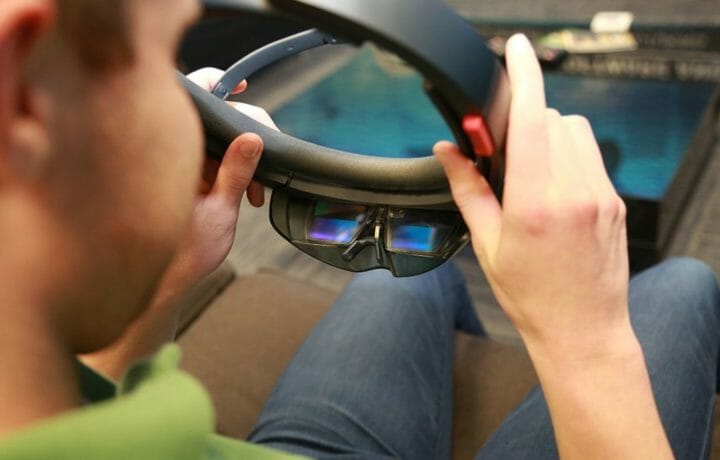In the early-1990s gamers reported nausea after playing Wolfenstein 3D, the original first-person shooter video game. Motion sickness caused by video games – sometimes called “simulator sickness” was the result of a disconnect between what the players’ eyes saw and what their bodies actually felt.
The same problem is now affecting those who may have to do shooting in real life rather than in a game, as there are reports of U.S. Army soldiers experiencing headaches, eyestrain, and notably, nausea from using Microsoft’s HoloLens-based augmented reality (AR) goggles. This is a major setback for the system.
It was in April 2021 that the tech giant announced its Integrated Visual Augmentation System (IVAS) program would move from rapid prototyping to the production and rapid fielding stage.
Now it appears that Microsoft may have to do a hard reboot on the system.
AR For the Warfighter
The IVAS headset, which is based on HoloLens and augmented by Microsoft Azure cloud services, was developed for use with the United States Army. IVAS can address capability gaps in the dismounted close combat force that was identified by the Army leadership via the 2018 National Defense Strategy.
Developed to balance weight and soldier load, while still providing enhanced capabilities for the warfighter, the IVAS resembles an oversized pair of goggles. It integrates key technology systems into one device to provide a single platform for soldiers to fight, rehearse, and train. It was also developed to provide enhanced situational awareness, while also enabling information sharing and decision-making in a variety of scenarios.
Last September, Microsoft received approval from the Army to begin the delivery of the initial order of 5,000 HoloLens-based kits. That was actually after the system was put on hold while it was improved.
Now, instead of ordering additional units, Microsoft will have to further refine the platform.
“AR and mixed reality (MR) is all still in the evaluation phase,” suggested technology analyst Roger Entner of Recon Analytics. “I am not sure where they are in those tests.”
Host of Problems
However, in recent testing, soldiers found that the goggles didn’t contribute enough to complete their mission. Following a test, Insider reported last fall, one soldier bluntly suggested that the “devices would have gotten us killed” – noting the light emitted by the device’s heads-up display.
According to more recent reports, the goggles are causing the aforementioned eye strain, headaches, and nausea.
“VR (virtual reality) and AR headset users have long experienced symptoms of visually induced motion sickness (VIMS),” explained Charles King, technology analyst at Pund-IT.
A 2022 study conducted by the Fraunhofer Institute for Communication, Information Processing and Ergonomics in Bonn, Germany last year, found VIMS remains a serious concern in modern AR applications. It is one that may not be easily resolved.
“While the issues can vary significantly from user to user, they tend to be more severe in dynamic simulations with moving objects,” King told ClearanceJobs. “That is a serious challenge in military situations where you want AR tools/solutions to be useful to a large majority of troops, not just those who suffer minimal nausea, headaches, and other side effects. Whether these problems will ever be corrected is hard to say since they’ve been commonplace during the past two-plus decades of AR/VR development. If not, the potential benefits may be AR/VR pretty meager.”
Back to the Drawing Board
The U.S. government has now put on hold any additional acquisition of the HoloLens-based AR combat goggles – and Congress pressed reset on the order for the already ordered 6,900 headsets worth a reported $400 million. However, it still provided $40 million to Microsoft to develop a new version.
As Engadet.com reported, the DoD contract for the goggles has significantly boosted Microsoft’s ability to profit from its AR technology. Prior to working with the Pentagon, HoloLens had been marketed for enterprise manufacturing, training, and for industrial purposes.
The timing of this latest news comes as Microsoft announced that it could layoff as many as 11,000 employees this week.



